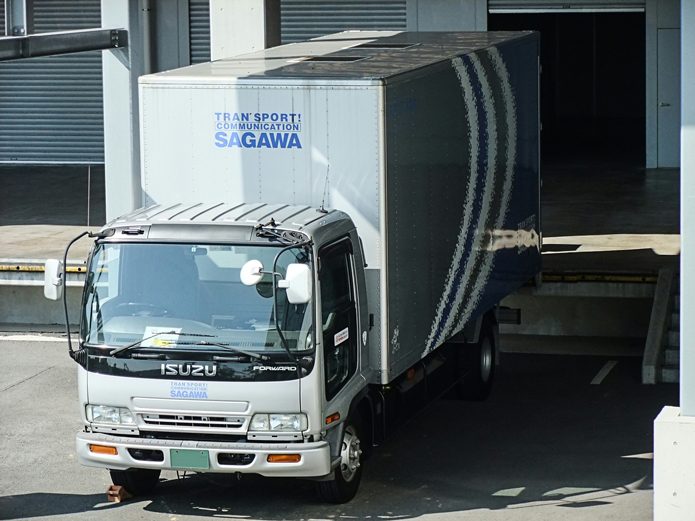
The proverb stating that a chain is only as strong as its weakest link is about to be tested. In this case, it’s the supply chain, as parcel delivery drivers are being stretched to the limit and their unflagging efforts are no longer taken for granted.
As a result, the healthy growth in e-business supported by Japan’s parcel delivery network may be disrupted as a result of an increase in fees or the curtailing of services in the near future, the Shukan Gendai warned on 4 March.
Currently Amazon.com, Inc.’s Japan operation alone fills about 200mn orders per year. But a looming shortage of personnel may seriously cut into its business. Exacerbating the pinch are special members’ services that promise same-day delivery or, in the case of some products, delivery within one hour of receipt of an order.
From 2005 until 2013, Amazon Japan had used Sagawa as its main delivery agent, but then shifted to Japan Post, which operates as a private entity. The Sagawa drivers couldn’t handle the work, and Japan Post employees don’t seem to like it any better.
“The most troublesome thing is the size of the packages”, complained a Japan Post delivery man. “Even when the contents of the box are fairly small, Amazon uses a larger box than necessary, and many times they can’t be inserted into the post box. If the recipient isn’t at home to accept it, I have to write out a non-delivery notice and come back later. That delays other deliveries, and my work hours run into overtime almost every day”.
While drivers of long-distance lorries, according to industry data, earn an average of ¥4.89mn per year (based on an average of 1,124 working hours per year), operators of vans and small delivery vehicles earn considerably less—¥3.88mn for an average of 2,380 hours per year. That brings their hourly earnings to about ¥1,500 per hour, or about the same as what a staffer on the graveyard shift at a convenience store earns.
Hosei University business professor Yuji Namiki argues that, since a commercial driver’s licence and familiarity with the roads—as well as fluency in the Japanese language—are necessary, the worker shortage can’t be supplemented by use of immigrant workers.
A week to the day following the Shukan Gendai article’s appearance, on 27 February the Nikkei Marketing Journal (NMJ) reported that Yamato Transport Co., Ltd.’s worker’s union will include a reduction in the volume of deliveries in its package of demands to management. December last year saw nearly double the workload in some cases, as deliveries of Christmas and year-end gifts placed a further burden on delivery agents.
The NMJ article speculated on what changes might be anticipated. They included higher delivery costs; suspension of deliveries over the New Year’s period; and the reconsidering of time-specified delivery requests for evenings and night-time.
Another possible change is adding a surcharge in cases of non-delivery that require an extra trip. Finding ways to minimize the latter is of particular urgency, since an estimated 20% of all shipments require a second trip, but at present this is not covered by an additional charge.
A surcharge, however, faces numerous stumbling blocks. One is who will be required to pay the additional charge. If, for example, the initial non-delivery is a seasonal gift, charging the recipient would be regarded as impolite. Management also fears that demanding a surcharge from the recipient is likely to result in haggling, placing an additional burden on the delivery agent’s schedule.
With the worsening labour shortage, the reporter concluded that the only equitable solution would be that all three parties—the recipient, sender and delivery firm—work out an arrangement referred to as sanpo ichiryozon—a disadvantageous compromise in which the losses are split equally among the three parties.